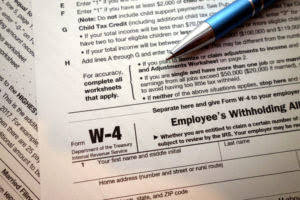In contrast to cash dividends discussed earlier in this chapter, stock dividends involve the issuance of additional shares of stock to existing shareholders on a proportional basis. For example, a shareholder who owns 100 shares of stock will own 125 shares after a 25% stock dividend (essentially the same result as a 5 for large stock dividends and stock splits are issued primarily to: 4 stock split). Importantly, all shareholders would have 25% more shares, so the percentage of the total outstanding stock owned by a specific shareholder is not increased. As a result, stock splits help make shares more affordable to small investors and provides greater marketability and liquidity in the market. A stock split is used primarily by companies that have seen their share prices increase substantially. Although the number of outstanding shares increases and the price per share decreases, the market capitalization (and the value of the company) does not change.
Which of these is most important for your financial advisor to have?
Assume that a board of directors feels it is useful if investors know they can buy 100 shares of the corporation’s stock for less than $5,000. In other words, they prefer to have the price of a share trading between $40 and $50 per share. If the petty cash market price of the stock rises to $80 per share, the board of directors can move the market price of the stock back into the range of $40 to $50 per share through a 2-for-1 stock split.
Accounting for Stock Splits
Thus, although the number of outstanding shares and the price change, the market capitalization remains constant. The 2-for-1 stock split will cause the quantity of shares outstanding to double and, in the process, cause the market price to drop from $80 to $40 per share. For example, if a corporation has 100,000 shares outstanding, a 2-for-1 stock split will result in 200,000 shares outstanding.
Why You Can Trust Finance Strategists
- When state law requires a transfer, under the circumstances of a split effected as a dividend there is no need to capitalize retained earnings, other than to the extent occasioned by legal requirements.
- After the split, they will owe 200 shares (that are valued at a reduced price).
- As a compromise, the action can be described as a stock split effected in the form of a dividend.
- The amount transferred for stock dividends depends on the size of the stock dividend.
- The purpose of these activities is generally to stimulate activity in the stock by reducing the trading value of each share, with the ultimate goal of increasing the total value of the shares.
- For example, if an investor shorts 100 shares of XYZ Corp. at $25, he or she will be required to return 100 shares of XYZ to the lender at some point in the future.
At the time of the split a memo entry would be entered in the records stating that after the 2-for-1 stock split, the corporation has 200,000 shares of $0.25 par value common stock outstanding. No dollar amounts would be posted to the accounts in the general ledger. This procedure is typically used by companies with low share prices that would like to increase their prices. A company may do this if they are afraid their shares are going to be delisted or as a way of gaining more respectability in the market. Many stock exchanges will delist stocks if they fall below a certain price per share. When a company’s share price increases to a nominal level that may make some investors uncomfortable or is beyond the share prices of similar companies in the same sector, the company’s board may decide on a stock split.
Large increases in the number of shares are achieved through stock splits and large stock dividends. A stock split happens when a corporation increases the number of its common shares and proportionally decreases its par or stated value. Even though the total amount of stockholders’ equity remains the same, a stock dividend requires a journal entry to transfer an amount from the retained earnings section to the paid-in capital section.
What is your current financial priority?

Stock dividends have no effect on the total amount of stockholders’ equity or on net assets. They merely decrease retained earnings and increase paid-in capital by an equal amount. Immediately after the distribution of https://www.bookstime.com/ a stock dividend, each share of similar stock has a lower book value per share.

Ask a Financial Professional Any Question
- Since many small investors think the stock is now more affordable and buy the stock, they end up boosting demand and drive up prices.
- In May 2011, Citigroup reverse split its shares 1-for-10 in an effort to reduce its share volatility and discourage speculator trading.
- In both cases, the number of shares issued and outstanding doubles, and the market price per share will fall accordingly.
- Approval must be obtained not only from the state authority but also from the stockholders through a vote.
- Perhaps a corporation does not want to part with its cash, but wants to give something to its stockholders.
- Before the split, 1,000 shares at $80 each totaled $80,000; after the split, 2,000 shares at $40 each still totals $80,000.
Stock dividends and stock splits affect the number of common shares outstanding, which in turn influences the earnings per share (EPS) calculation. A stock split occurs when a company increases the number of outstanding shares with a proportional decrease in the par or stated value. Since every stockholder will receive additional shares, and since the corporation is no better off after the stock dividend, the value of each share should decrease. In other words, since the corporation is the same before and after the stock dividend, the total market value of the corporation remains the same. Because there are 10% more shares outstanding, each share should drop in value.
Disclosures related to prior years should be restated retroactively to include the effects of the split. For example, if a stock split happens, the prior year’s earnings per share figure should be altered to account for the larger number of shares. It doesn’t matter if you own a stock before or after a split because the value won’t change. A stock split is purely a mathematical decision that does not reflect the valuation of a company. If a company is going to perform well, it will before or after a split.
Do you own a business?

Rather, it is the distribution of more shares of the corporation’s stock. Perhaps a corporation does not want to part with its cash, but wants to give something to its stockholders. If the board of directors approves a 10% stock dividend, each stockholder will get an additional share of stock for each 10 shares held. Recording small stock dividends A stock dividend of less than 20 to 25% of the outstanding shares is a small stock dividend and has little effect on the market value (quoted market price) of the shares. Thus, the firm accounts for the dividend at the current market value of the outstanding shares. A stock split is usually done by companies that have seen their share price increase to levels that are either too high or are beyond the price levels of similar companies in their sector.